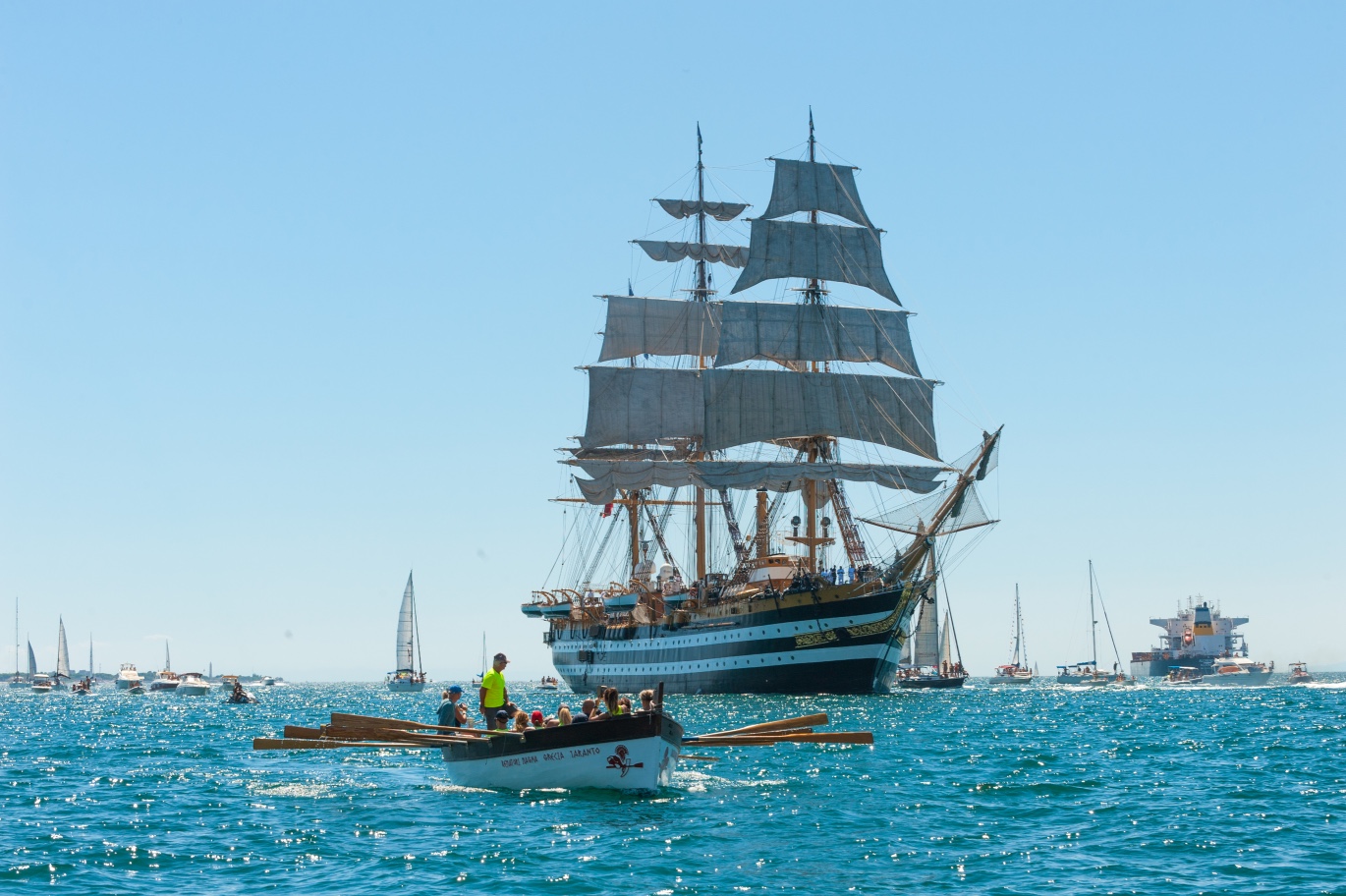Indeed, it’s undeniably the season of the sea in Italy. The arrival of summer brings with it a healthy dose of sun, warmth, and an insatiable yearning for holidays. This year, perhaps more than others, the overarching sentiment seems to echo one sentiment: “Sea!”
But let’s not confine our thoughts to just the sandy beaches, shoreline aperitifs, or boat excursions (enticing as they may be!). The sea is first and foremost a precious resource that transcends the notion of a simple “beachside holiday,” which, in this context, forms a considerable source of income for coastal communities. This is a lesson well-taught by Emilia Romagna, where all evidence attests that the recent flooding didn’t pollute the coasts, meaning vacationers can confidently flock to areas from Rimini to Riccione, from Cervia to Cattolica, all while “aiding” in the recovery following May’s devastating rains. Take also the Versilia coastline of Tuscany: sun loungers and deck chairs are not just objects, they’re a symbol, epitomizing high-quality tourism and meticulous attention to customer care.
Historically, the sea has been a pivotal medium of communication, a hub of exchange for people and goods, serving as a “bridge” connecting societies, economies, civilizations, and distant worlds. It’s not something that divides, but rather, it links two shores, and this unity itself, is beautiful.
Moreover, the sea is also the rich biodiversity and the health of the waters we immerse ourselves in. It represents a bountiful treasure, with parts still waiting to be discovered, that we often endanger with our carelessly anti-environmental activities. Just observe the tons of plastic bottles returned to us by the waves or the numerous cigarette butts nestled among ancient grains of sand. The sight of whales with their bellies filled with trash or turtles suffocated by polyethylene bags may bring sorrow, but we must realize that just like them, we too are ingesting an increasing amount of microplastics through our food chain. We must acknowledge that in polluting the sea, we are only causing harm to ourselves.
We should bear this in mind when discussing global warming as well. The Mediterranean Sea is witnessing an influx of tropical species, a sign not just of rising temperatures (a surge of 4 degrees between 1985 and 2005) that make it increasingly habitable for such species (which pose grave risks to the enclosed ecosystem of the sea around the peninsula, given the introduction of a foreign species doesn’t come with the concurrent arrival of its natural predator to maintain balance), but also indicative of the imminent risk of disruption to traditional natural cycles.
Warmer waters facilitate the growth of algae and jellyfish, lead to the suffocation of fish, and inhibit the reproduction of animals like sea urchins. The Mediterranean, the Mare Nostrum of ancient Romans, despite only constituting 1% of the world’s oceans with its surface area of 2.5 million square kilometers, is home to 12,000 species, accounting for nearly 12% of global marine biodiversity. This includes creatures we once believed were extinct, such as the bivalve mollusk Pinna Nobilis.
Shifting the focus back to marine life, it’s vital to remember that the sea equates to sustenance: fish, crustaceans, mollusks, and other seafood. The dazzling array of seafood that countless recipes, from the North to the South, from the Tyrrhenian to the Adriatic, guide us to savor in the most delightful ways and to pair with the most complementary wines to enhance their flavors and qualities. The notions of responsible fishing and seafood consumption not only contribute positively to the environment and physiological well-being but also seamlessly lead us back to the subject of tourism. This, of course, is one of the key factors we readily link with our marine resources, whether we are discussing “Italy’s most beautiful sea” or “Italy’s cleanest sea.” Essentially, all these rankings serve to remind us that the Bel Paese – our beautiful country – owes part of its charm to its magnificent seas. Beyond the economic implications for hoteliers or restaurateurs, the focus should be on the sheer beauty: Italy’s sea, a treasure trove of wonders to be discovered, serves as a stunning, ever-present backdrop along the length of the peninsula. It adds an unmatched piece of charm to the jigsaw that is Italy.
But the sea, circling back to our initial point, is essentially a dominant element of our culture. It has perpetually been the vibrant heart of civilizations whose ingenuity, artistry, craftsmanship, and creativity have shaped us into what we are today. We inevitably associate Italy with the sea, and for this reason, as part of the comprehensive marketing initiative that the nation is embarking upon, an iconic symbol of Italy like the training ship Amerigo Vespucci will be transformed into a “floating embassy.” As it embarks on its global tour, it will carry everything embodying “Italian-ness.” An “Italian Village” that will demonstrate to the five continents, through its gastronomy and traditional products, the worth of our national brand, underscoring the significance of advocating for the recognition of Italian cuisine as a UNESCO intangible heritage.
This narrative extends even to sectors seemingly distant, such as fashion. A recent fashion show made in Italy underscored the extent to which the sea serves as a media magnet, a comprehensive communication medium, and a strategic tool for those who know how to utilize it. A few days ago, the D&G brand moored its mega yacht in Polignano, Puglia’s most well-known “postcard” spot. By simply anchoring their 50 million euro, 65-meter long leviathan, the designers not only drew global attention to their collection, unveiled in the exceptionally captivating settings of Alberobello (a UNESCO heritage site) and Ostuni, but also to the breathtaking coastal beauty of Italy’s “heel.”































